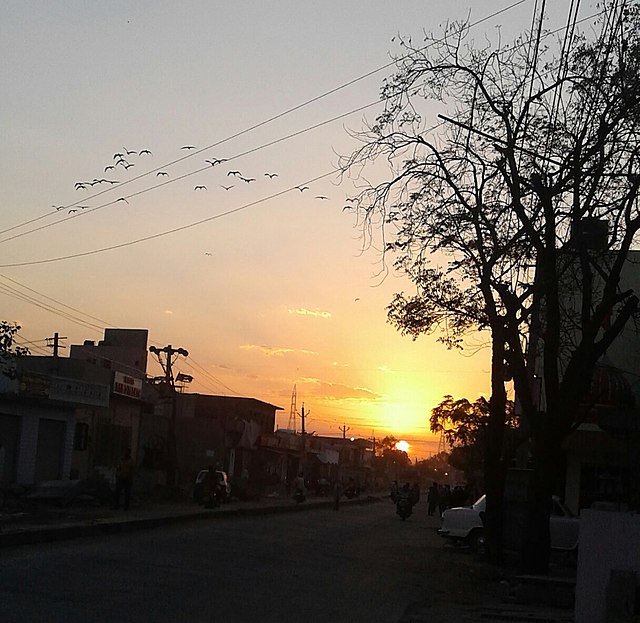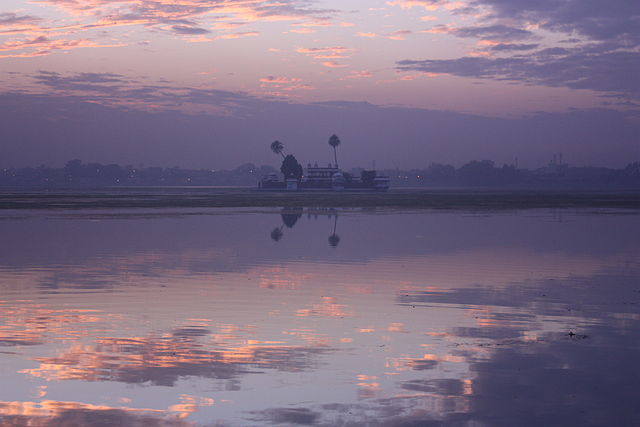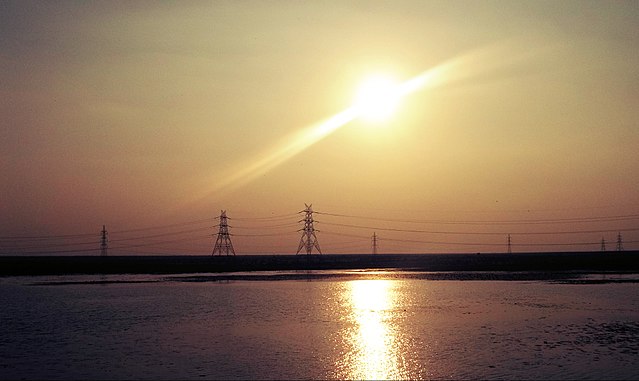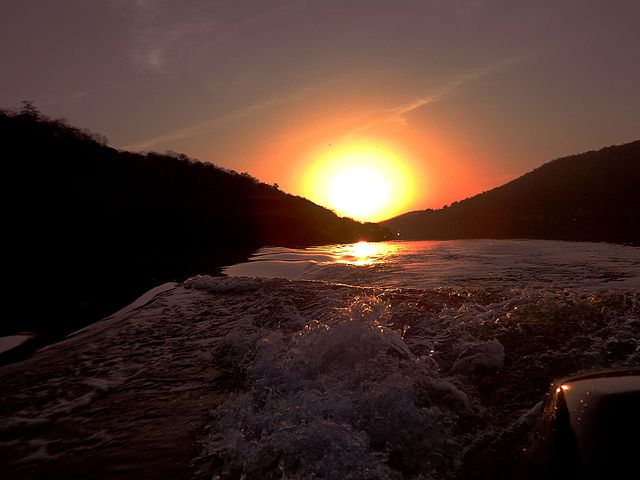Ever wondered what makes Kota, Rajasthan, tick when it comes to weather? Nestled along the banks of the Chambal River, Kota is a city that experiences a climate as vibrant and dynamic as its culture. From blistering summer days to soothing monsoon showers, the weather here shapes everything—daily routines, festivals, agriculture, and even tourism. In this guide, we’ll dive into the heart of Kota’s weather, exploring its seasons, quirks, and how you can make the most of it whether you’re a local or just passing through. Ready to unravel the climatic secrets of this educational hub? Let’s get started!
The Essence of Kota’s Weather
Kota’s weather is like a colorful canvas, painted with the bold strokes of a semi-arid climate typical of Rajasthan. The city experiences distinct seasons—scorching summers, a refreshing monsoon, and a mild winter. Each season has its own personality, influencing everything from what you wear to how you plan your day. The weather here isn’t just something you check on your phone; it’s a living, breathing part of life in Kota. Let’s break down what makes this climate so unique.
A Semi-Arid Climate: What Does It Mean?
Kota falls under the BSh category in the Köppen climate classification—hot and semi-arid. Think of it like a desert that’s not quite a desert. The city gets moderate rainfall, mostly during the monsoon, but for the rest of the year, it’s a dry affair with clear skies and intense heat. This climate shapes the region’s agriculture, water management, and even its architecture, with homes designed to stay cool under the relentless sun. Ever noticed how Kota’s buildings often have thick walls and shaded courtyards? That’s the weather at work!
The Role of the Chambal River
The Chambal River is like Kota’s lifeline, moderating the city’s weather in subtle but significant ways. It adds a touch of humidity during the monsoon and keeps the surrounding areas slightly cooler than the rest of Rajasthan’s arid expanse. The river’s presence also supports local ecosystems, making Kota a bit greener than its desert neighbors. Imagine the Chambal as a cool breeze in a hot room—it doesn’t change the whole climate but makes life a little more bearable.
Kota’s Seasons: A Year-Round Breakdown

Kota’s weather is a story told in three main chapters: summer, monsoon, and winter. Each season brings its own flavor, challenges, and opportunities. Let’s take a closer look at what you can expect throughout the year.
Summer in Kota: A Fiery Affair (March to June)
Summer in Kota is like stepping into an oven. From March to June, temperatures often soar above 40°C (104°F), with May being the hottest month. The sun blazes down, and the air feels like a hot blanket. Locals adapt by starting their days early, sipping on cooling drinks like lassi, and avoiding outdoor activities during the peak afternoon heat. If you’re visiting, pack light cotton clothes, stay hydrated, and embrace the siesta culture. Pro tip: A chilled glass of jaljeera can be your best friend in this heat!
Coping with Summer Heat
Surviving Kota’s summer is an art. Locals swear by traditional cooling techniques—like earthen pots for water storage and airy verandas for evening chats. Air conditioners and coolers are common in homes and coaching centers, where students flock to prepare for competitive exams. If you’re new to Kota, invest in a good sunscreen and a wide-brimmed hat. Ever tried a cooling face mask made from sandalwood paste? It’s a local favorite for beating the heat.
Monsoon in Kota: A Refreshing Respite (July to September)
When the monsoon arrives in July, it’s like the city lets out a collective sigh of relief. The skies open up, and Kota transforms into a lush, green oasis. Rainfall averages around 700-800 mm annually, mostly concentrated in these months. The Chambal River swells, and the surrounding fields come alive with crops. However, heavy rains can sometimes lead to waterlogging in low-lying areas, so keep an umbrella handy. The monsoon is also when Kota’s festivals, like Teej, light up the city with color and joy.
Monsoon Challenges and Charms
The monsoon isn’t all rainbows and raindrops. Waterlogging and traffic snarls can test your patience, especially in bustling areas like Gumanpura. But there’s something magical about sipping chai at a roadside stall while the rain patters down. The monsoon also brings out Kota’s natural beauty—think of the Seven Wonders Park glowing under a misty sky or the lush greenery along the Chambal River. Want to experience Kota at its most vibrant? Visit during the monsoon and soak in the festive vibe.
Winter in Kota: Mild and Pleasant (October to February)
Winter in Kota is like a gentle hug after the intensity of summer and monsoon. From October to February, temperatures range between 10°C to 25°C (50°F to 77°F), making it the most pleasant time to explore the city. The clear skies and cool breezes are perfect for sightseeing, whether you’re visiting the Kota Garh Palace or strolling through the Rao Madho Singh Museum. Locals bundle up in shawls, and street vendors sell hot jalebis to warm your soul. It’s the season to fall in love with Kota’s charm.
Winter Activities in Kota
Winter is when Kota truly shines for tourists. The mild weather makes it ideal for exploring attractions like the Kishore Sagar Lake or taking a boat ride on the Chambal. Students, who form a large part of Kota’s population, find this season perfect for outdoor study sessions in parks. Ever tried gajar ka halwa on a chilly evening? It’s a winter delicacy you can’t miss in Kota’s local eateries.
How Weather Shapes Life in Kota

Kota’s weather isn’t just a backdrop; it’s a key player in the city’s daily life. From agriculture to education, the climate influences how people live, work, and celebrate. Let’s explore how the weather weaves itself into the fabric of Kota’s culture.
Agriculture and the Weather
Kota is part of Rajasthan’s agricultural belt, and the weather plays a starring role in what farmers grow. The monsoon is critical for crops like wheat, rice, and soybeans, which thrive in the region’s fertile soils. A good monsoon means a bountiful harvest, while a weak one can spell trouble for farmers. The Chambal River’s irrigation systems help, but the rains are the real MVP. Ever wondered why Kota’s markets are bursting with fresh produce in September? Thank the monsoon!
Education and Coaching Culture
Kota is India’s coaching capital, with thousands of students flocking to prepare for exams like IIT-JEE and NEET. The weather impacts their routines too. Summer heat pushes classes to early mornings or air-conditioned rooms, while winter’s pleasant vibe allows for outdoor study groups. Monsoon, though, can be a hurdle—imagine trudging through rain to get to your coaching center! Yet, students adapt, armed with umbrellas and a determination as strong as Kota’s summer sun.
Tourism and Weather
Tourism in Kota peaks during winter when the weather is just right for exploring. Attractions like the Jagmandir Palace and the Chambal Garden are at their best under clear, cool skies. Summer sees fewer tourists due to the heat, but the monsoon draws adventure seekers who love the lush landscapes and dramatic skies. Planning a trip? Winter’s your best bet, but don’t sleep on the monsoon’s unique charm.
Weather Patterns and Trends in Kota
Kota’s weather isn’t static—it’s been changing, just like the rest of the world. Rising temperatures and shifting rainfall patterns are part of the story. Let’s look at what’s been happening and what it means for the future.
Climate Change Impacts
Climate change is leaving its mark on Kota. Summers are getting hotter, with heatwaves becoming more frequent. Monsoons are less predictable, sometimes bringing intense downpours that cause flooding. Winters, while still pleasant, are shorter than they used to be. These changes affect everything from water availability to crop yields. It’s like the weather is playing a game of chess, and Kota’s residents are learning to adapt to every move.
Weather Forecasting in Kota
Thanks to modern technology, staying ahead of Kota’s weather is easier than ever. Apps and local weather stations provide real-time updates, helping residents plan their days. Farmers rely on forecasts to time their planting, while students check the weather before heading to class. Ever been caught in a sudden rain without an umbrella? A quick check of a weather app can save you from that soggy fate.

Whether you’re a resident or a visitor, mastering Kota’s weather is key to enjoying the city. Here are some practical tips to keep you comfortable year-round.
Staying Cool in Summer
Beat the heat by staying hydrated—carry a water bottle and sip frequently. Light, breathable fabrics like cotton are your allies. If you’re out and about, seek shade during the hottest hours (noon to 4 PM). Locals love cooling drinks like aam panna or sugarcane juice—give them a try for a refreshing boost.
Embracing the Monsoon
Monsoon in Kota is a mixed bag of beauty and challenges. Invest in waterproof gear—think sturdy umbrellas and raincoats. Avoid low-lying areas prone to waterlogging, and keep an eye on weather alerts for heavy rain. Want to enjoy the season? Head to a scenic spot like the Chambal Riverbank and watch the rain transform the landscape.
Making the Most of Winter
Winter is the time to explore Kota’s outdoor attractions. Pack light layers for the cool mornings and evenings, but don’t worry about heavy winter gear—Kota’s winters are mild. Enjoy street food like kachoris or take a leisurely walk through the city’s gardens. It’s the season to soak in Kota’s beauty without breaking a sweat.
Kota’s Weather and Its Cultural Impact
The weather in Kota doesn’t just dictate what you wear—it shapes the city’s culture. Festivals like Teej and Gangaur are timed with the monsoon, celebrating the rains that bring life to the region. Winter brings vibrant fairs, while summer evenings are for community gatherings under starry skies. The weather is like the rhythm to Kota’s cultural dance, setting the pace for its traditions.
Conclusion
Kota’s weather is a fascinating blend of extremes and delights, from the fiery summers to the refreshing monsoons and mild winters. It shapes the city’s lifestyle, agriculture, and tourism, making it an integral part of Kota’s identity. Whether you’re a student burning the midnight oil, a farmer praying for rain, or a tourist exploring the city’s heritage, understanding Kota’s climate is key to thriving here. So, next time you check the forecast, remember—you’re not just planning your day; you’re tapping into the heartbeat of Kota. Embrace the seasons, adapt to the changes, and let Kota’s weather guide you through an unforgettable experience.
FAQs
1. What is the best time to visit Kota?
The best time to visit Kota is during winter (October to February) when the weather is mild and perfect for sightseeing. You’ll enjoy comfortable temperatures and clear skies, ideal for exploring attractions like the Chambal Garden or Kota Garh Palace.
2. How hot does it get in Kota during summer?
Summers in Kota (March to June) can be intense, with temperatures often exceeding 40°C (104°F). May is typically the hottest month, so staying hydrated and avoiding midday heat is crucial.
3. Does Kota experience heavy rainfall during the monsoon?
Kota receives moderate rainfall, averaging 700-800 mm during the monsoon (July to September). While heavy showers can occur, leading to waterlogging in some areas, the season also brings lush greenery and festive vibes.
4. How does the weather affect Kota’s coaching culture?
The weather influences students’ routines in Kota. Summer heat pushes classes to early mornings, monsoon rains require waterproof gear, and winter allows for outdoor study sessions. Coaching centers often use air conditioning to ensure comfort year-round.
Tourists should stay hydrated and wear sunscreen in summer, carry umbrellas during the monsoon, and pack light layers for winter. Checking weather forecasts and avoiding flood-prone areas during heavy rains is also wise.

